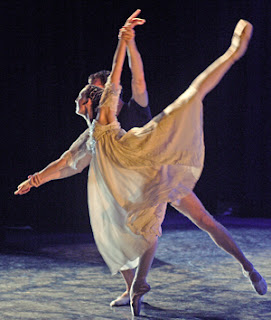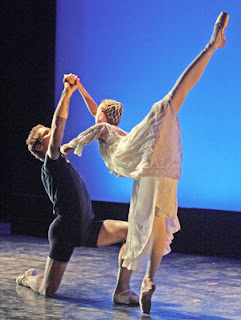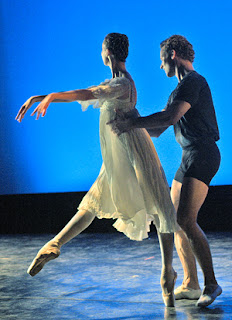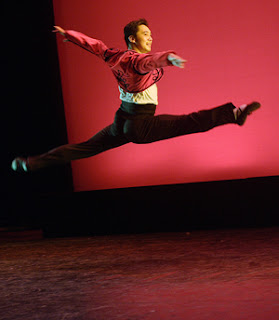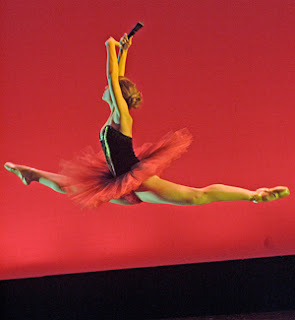Al Oerter is one of only two athletes (Carl Lewis is the other) to win 4 consecutive Olympic gold medals in the same event. Al is the only athlete to also set a new Olympic record with each gold.
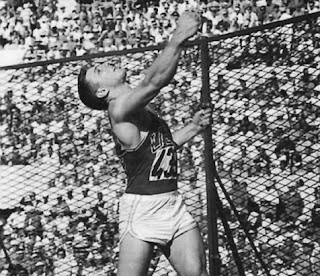
Alfred Oerter Jr. had never won a major international competition when he went to the Melbourne Olympics, as a college sophomore. On his first toss in the finals, he set an Olympic record and a personal best. No one came within five feet of him.
Less than a year later, Al almost died in a horrible auto accident. He recovered, but appeared headed for defeat in the 1960 Rome Games. In the finals, teammate Rink Babka led Oerter by 15 inches. But Babka noticed Al's left arm was out of position before he threw... and told him. With one throw left, Al listened, adjusted his windup and threw the discus for another Olympic record, personal best, and second gold medal.
In 1962, he became the first athlete to throw the discus more than 200 feet. Six days before the 1964 Tokyo Games, he tore the cartilage in his ribcage. Doctors told him not to compete or risk internal bleeding. He ignored them. He later remembered thinking "These are the Olympics and you would die for them." Covered with ice packs, bandages, and shot full of pain killers. In agony and behind the leaders, Al somehow let out a throw that again, set an Olympic record and won him his third gold.

Mexico City. 1968. He had a pulled thigh muscle, and wore a neck brace because of a chronic back problem. On the day of the finals, it began to rain. After repeated bad throws, he threw away the brace. On his next throw, Al set his fourth Olympic record, beating both the competition and his previous personal best by more than five feet. He finished with the three best throws and a 4th gold medal.
Oerter retired after 1969, but at age 39, he started training again.
Things didn't work in his favor. In 1980, at 43, he was an alternate on the U.S. team that boycotted the Moscow Olympics. An injured tendon kept him from competing in the 1984 Olympic Trials at age 47. Earlier that year, he had a throw of 222-9, a distance further than the gold winning distance at the Olympics that year.
Teammate Jay Silvester once said: "When you throw against Oerter, you don't expect to win. You just hope."
In his later years, Al found a new passion... abstract art. Some of his earliest heroes had been the avant-garde artists in New York as he grew up. To that end, he took up the brush...

or heaved a paint-filled discus at a canvas...

and created a foundation for Olympians who, like him, also found a second passion in art. www.artoftheolympians.com
So why does Al resonate so much with me?
Perhaps its because the story of someone who was able to once every four years... focus all of his being, energy and concentration into a single movement (at a single moment) that became superhuman in its scope and being... is thrilling.
By all accounts, Al was a serious, thoughtful, well spoken guy. Strong but unassuming. And his gift was natural. By his own assesment, he had lousy technique. But he once said, "I could throw a baseball, a football or a golf ball a country mile. It was just easy to throw anything."

As I mentioned in the last post, Al Oerter died this past October, but that isn't the end of this story.
A few years ago, I was surfing the net and I wondered, "Hmmm. You can find anyone via the net these days. I wonder what would happen if I googled "Al Oerter." I pressed "enter."
And out popped www.aloerter.com.
I took my little curser thingy over and punched it.
And there was a personal site, run by Al, selling memorabilia and his paintings. So I thought what the heck... and wrote an honest-to-goodness fan letter and sent it off. Now mind you, Al had a god-like status to me (only matched by Julie Newmar, in whose presence I once became a blithering idiot unable to form sentences. God only knows what would happen if I met Natalia Makarova) The next day I got a beautiful, thought out response engaging in the more spiritual aspects of discus throwing that I had brought up in my letter and that how interesting it was that I was a choreographer, since his wife was a dancer in the manner of Isadora Duncan.

After a few more exchanges, where I was on Cloud Nine (but attempting not to be an overly fawning fan), Al sent me what is now my prized possession... a discus with a quote from one of his e-mail responses written on it.
That quote is the title of this post.
Did I ever really meet Al Oerter... no.
Were we friends... no.
As he was lying on his deathbead was he thinking about our "conversations" as he was re-living his Olympic triumphs, the birth of his daughters and wedding days... no.
But that quote is mine.
It is for me alone.
From Al.
Labels: Al Oerter
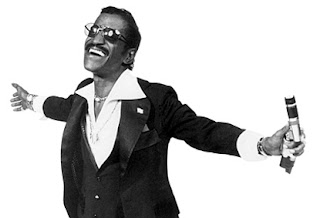
 I didn't really want to do complete costumes for this piece as...
I didn't really want to do complete costumes for this piece as...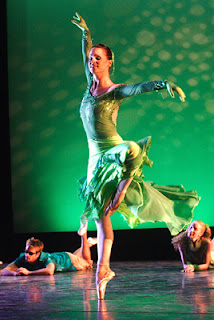 So the "fish" in the aquarium were fish because they actually did some movement based on the "Swim" a dance from the 60's as well as the use of bourees ( a ballet step that looks as if the dancers is skimming above the surface of the stage.)
So the "fish" in the aquarium were fish because they actually did some movement based on the "Swim" a dance from the 60's as well as the use of bourees ( a ballet step that looks as if the dancers is skimming above the surface of the stage.)
 The "advance guard" tells me it is covered with snow. Time to pack the hats and mittens. When I get back in a few days, I'll talk about Carnival of the Animals.
The "advance guard" tells me it is covered with snow. Time to pack the hats and mittens. When I get back in a few days, I'll talk about Carnival of the Animals.
